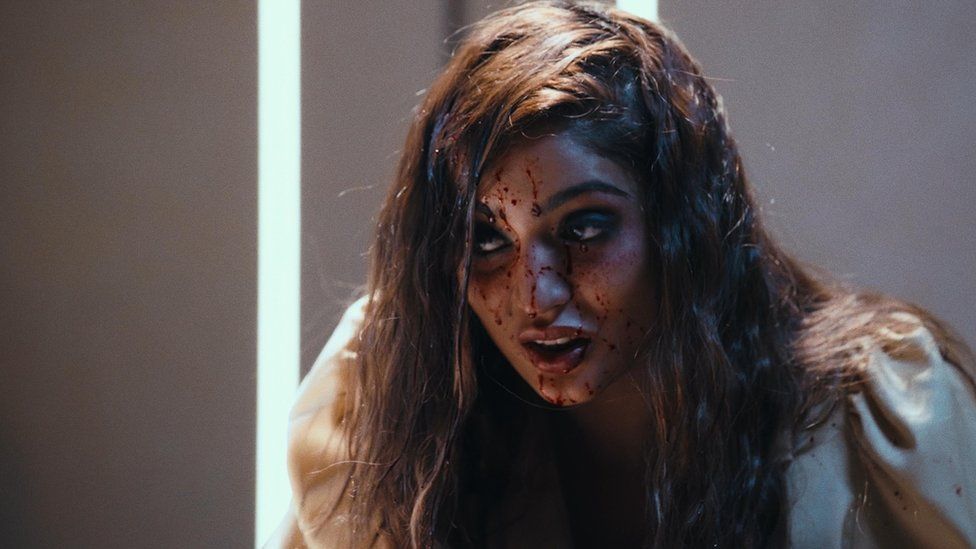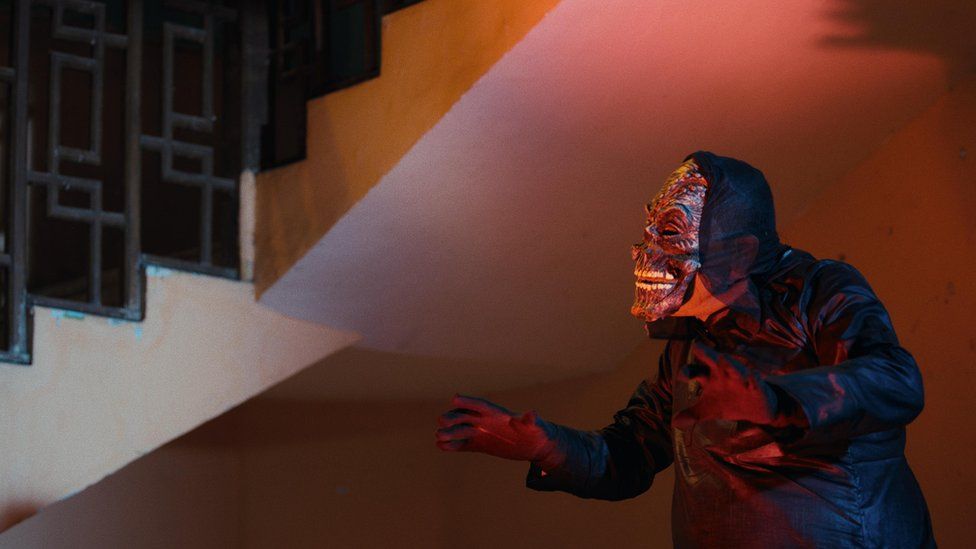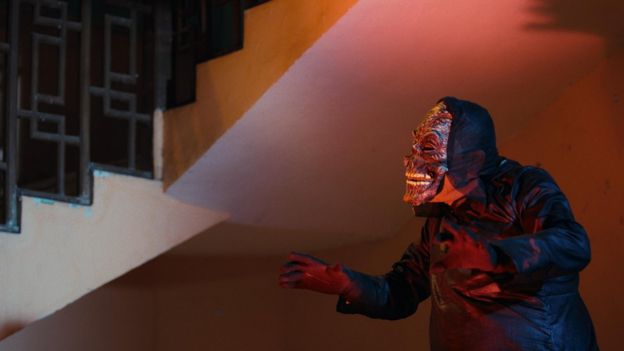
“Every scene in a film should touch either your head, your heart… or below the belt,” says director Dilip Gulati, explaining why he makes the films he makes in a new docuseries about Bollywood’s “B movies”.
Often looked down upon as Bollywood’s unsophisticated cousins, Indian pulp films were made on paltry budgets and impossibly short deadlines. They were helmed by largely-unknown performers and marked by wafer-thin plots, corny dialogues, gaudy aesthetics and sex.
Thousands flocked to see these films in their heyday in the 1990s, but by 2004, the industry had fizzled out.
A new six-part documentary series on Amazon Prime – Cinema Marte Dum Tak (Movies till the end of time) – is shining the spotlight on these films; its spirit and key players; the reasons for its existence and eventual demise.
Four directors whose films were a hit – Vinod Talwar, J Neelam, Kishen Shah and Dilip Gulati – are given a shoe-string budget, a tight timeline and asked to direct a film in their trademark style.
The directors – who are returning to their craft after decades – immediately get to work, roping in old friends and collaborators. As the show follows these directors, the audience is transported back to the 90s.
Audiences get to see snippets of their old films, which had cheesy titles like Maut ke peeche maut (Death after death) Kunwari chudail (Virgin witch) and Main hoon kuwanri dulhan (I’m a virgin bride).

These films would be shot on a single set and directors would double up as art directors, costume designers, and sometimes even actors. The films were often renamed with raunchier titles to attract bigger audiences and plots altered if the director had a brainwave.
Sometimes, Bollywood stars would be roped in for a few scenes and would be paid in cash for every working day. Kanti Shah, who was a prolific maker of B-movies and is part of the series, talks about how he has featured Govinda, Mithun Chakraborty and Dharmendra in his films.
Nothing was too taboo, too wild or too cheesy to find space in these films. Whether it was a dominatrix bandit recruiting male masseurs in her gang or a gender-changing ghost having sex with maids, everything was par for the course.
Aseem Chandaver, a film researcher, remembers a film called Khooni Dracula (Killer Dracula) where a vampire walks through a slum and has sex with a woman bathing in the open.
“In a mainstream film, even if the ghost was having sex with people, it would be in some upscale place or, at least, in a bathtub,” he muses. “But these directors knew the realities of their audience and didn’t shy away from showing it on screen.”
Cinema houses showing these films would run so full, that extra chairs had to be added to accommodate people. The audience was largely India’s working class – tuk-tuk and taxi drivers, street food vendors, labourers – residing in far-away small towns, and working in gruelling jobs that often pay less than minimum wage.

For them, these films offered a source of escape from their bleak daily lives. For a couple of hours, in a dimly-lit cinema hall, they could lose themselves in a movie that titillated and thrilled them.
The series also captures the stigma and struggle the people who worked in them faced because of their association with these “low-budget horror films”. They found it hard to find work in mainstream films or bag roles that were deemed more serious. The films also often ran into trouble with the censor board.
Distributors began to push for more risqué scenes, putting it down to audience demand. But because the censors wouldn’t clear these, directors shot them separately, and inserted these “bits” into the film during screening.
Things came to a head when a projectionist inserted a sex scene in a sequence involving siblings. This created a furore and the police began to crack down on these films. By 2004, the B-movie industry had almost died out, robbing hundreds of their livelihoods.
Even though this “golden age of B-movies” has ended, their legacy lives on through fan communities, memes, spoofs and jokes.
They have also inspired poster art and their raunchy titles often make their way into dumb charade games. Vibhushan Subba, a film scholar, says these films lend themselves to the culture of fandom because of their “outlandish ingenuity, transgressive quality and over-the-top aesthetics”.
“These films carved out a niche – even if a tiny one, for themselves in popular culture,” says Mr Subba.

Read more India stories from the BBC:


